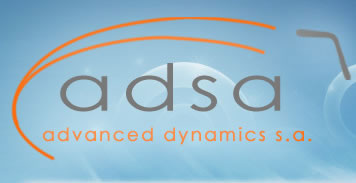

Released on: October 05, 2010, 5:31 am
Author: advanced dynamics
Industry:
Aerospace
The 61st International Astronautical Congress has been celebrated in Prague, CZ. In this congress, new advances in Aeronautics and Astronautics have been exposed. Doctor Gabriel Barceló´s paper has had special relevance in this congress. This paper: ON THE EQUIVALENCE PRINCIPLE relates to his investigation on field theory of Rotational Dynamics, which specifically applies to rigid rotating physical systems and which has numerous and significant scientific and technological applications. The achieved results allow us to obtain a new perspective in dynamics, unknown up to date, making it possible to turn given trajectories which, until now, have been considered as chaotic, into deterministic terms. After a deep analysis of the Equivalence Principle, the Spanish investigator, Doctor Barceló has come to the conclusion that there still exists an unstructured scientific area in the present general assumptions and, specifically, in the area of rigid bodies exposed to simultaneous non-coaxial rotations.
For this purpose, it is necessary to analyze the velocity and acceleration fields that are generated in the body, and assess new criteria in these speeds coupling. In this context, reactions and inertial fields take place, which cannot be justified by means of the classical mechanics.
Doctor Barceló briefly informed to assistants of the surprising results obtained, and expressed the interest towards the investigation of this new area of knowledge in rotational non-inertial dynamics, and of its multiple and remarkable scientific and technological applications.
Quite a number of examples can be thought of for checking the dynamic hypotheses proposed by Doctor Barceló, which would allow us to interpret many, still unexplained assumptions in nature, using the interactions which result from rotating the space of events.
An example of the theory is the feared roll coupling of the planes. It happens when a plane, which is flying a screw or any other kind of air acrobatics which implies, for example, a turn around its main inertia axe, starts a new steering manoeuvre with curved trajectory. According to the supported dynamic hypotheses, the non-homogeneous distribution of speeds, generated by the new non-coaxial rotation of the plane mass, couples to the field of translation speed, causing an unintentional deviation of the trajectory as well as a possible loss of the plane control.
The same phenomenon occurs in the case of balls with spin effect, where non-homogenous speed and acceleration distributions are generated, which can be represented in a section of the mobile body. In the assumption of a football with intrinsic rotation, like the Jabulani, when being kicked eccentrically, a new non-coaxial momentum with the existent rotation can be generated. The speeds’ distribution of which couples, to the field of translation speeds, causing a curvilinear trajectory.
This, and many other examples, can be easily explained with the hypotheses of the Theory of Dynamic Interactions (TID) proposed by Doctor Barceló on the 61st International Astronautical Congress.
Contact Details: www.advanceddynamics.net
(34)914112823